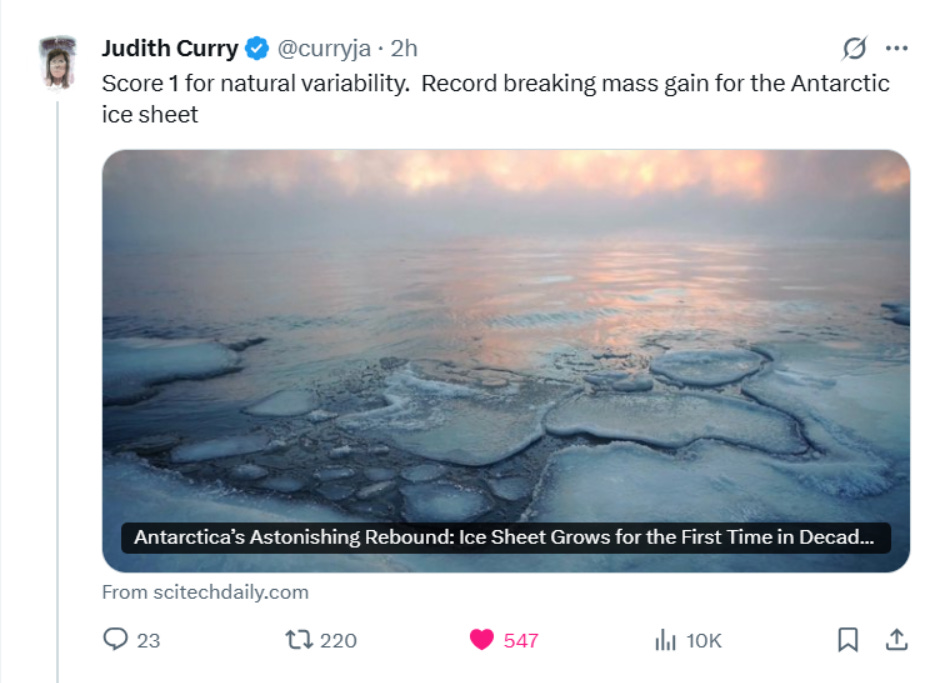What Has Caused The Abrupt, Record Breaking Antarctic Ice Sheet Mass Gain?
There’s much talk online about a new study showing that East Antarctica (plus the west Antarctic Peninsula) has gained a record breaking amount of ice mass between 2021 and 2023, after a significant and continuous decline from 2002, which accelerated in the decade 2011-2020. These are the main areas of ice loss and gain over the periods 2002-2010, 2011-2020 and 2021-2023.
The author’s graph clearly shows the abrupt trend reversal from 2021 as a consequence of the gains in the Antarctic Peninsula and East Antarctica exceeding the ongoing losses in West Antarctica.
Is this an inflexion point in a multidecadal natural cycle? It might be. Judith Curry suspects that natural variability might be the cause. But what type of natural variability I wonder?
I ask myself has it got more to do with the abrupt disruption of southern hemisphere circulation patterns caused by the eruption of Hunga Tonga in January 2022? Because if you look closely at the authors’ graph, you will notice that the really abrupt increase in ice mass began in early 2022, just after Hunga Tonga erupted. Before that, the ice mass gain had only been very modest and, if it were not for the sudden and sustained increase after January 2022, the overall trend might not have been affected. Looking at the graphs for specific glaciers in East Antarctica is instructive.
Denman shows a sharp increase in mass just prior to 2022, so the volcano could not have caused that. This then comes to a brief halt into 2022, then there is another sharp increase of roughly equal magnitude continuing to the end of 2022, whereafter ice mass declines slightly. So basically, if Southern Hemisphere disrupted circulation patterns due to Hunga Tonga have had an influence on ice mass gain in this particular glacier, we can only attribute 50% at most to the volcano.
With Moscow though, virtually all of the huge gain in ice mass occurred after January 2022. The same is true of the more modest gains of Totten and Vincennes Bay.
So, looking at the data, Hunga Tonga might well be responsible for most of the abrupt ice mass gain of the Antarctic Ice Sheet - or it might not. If the gains are sustained and continue over the next decade or two, this would suggest that multidecadal natural variability is in play.






Anyone who claims that they understand natural climatic variability at this point is wrong. We simply don't have sufficient data from the coupled atmospheric and oceanic systems to document climatic trends.
My husband worked in a NASA group that did airborne laser altimetry in Greenland, some in Antarctica, some in Alaska. This was from the mid-90s till Ice Sat 2 got geared up in the 2010s. I remember him saying some of the Greenland glaciers were growing, some were shrinking. It's a complex picture but complexity does not attract the big research bucks the way a simple apocalyptic picture does.